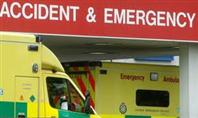Half of those diagnosed with pancreatic cancer between 2006 and 2008 (9948 cases) were emergency admissions to hospital, according to a report published in the British Journal of Cancer last Friday. This is over double the amount of all other cancers combined (24%) and the figure increases according to age with nearly two thirds of pancreatic cancer patients aged 70 or over being diagnosed by this emergency route.
The study looked at all English cancer patients diagnosed between 2006 and 2008, working backwards through their cancer journey to examine the sequence of events that led to diagnosis. Routes through emergency presentation, inpatients, outpatients, and screening were analysed.
The National Cancer Intelligence Network (NCIN) report showed a wide variation between cancers; with pancreatic cancer having some of the most emergency presentations while cancers such as skin and breast had the least.
Figures have worsened since 2010 report:
What is alarming is that these figures have worsened since the first Routes to Diagnosis report in 2010 and, with a rise in emergency presentations has come a decline in the numbers of pancreatic cancer patients being referred by the Government’s Two Week Wait system (urgent referral for suspected cancer) from 13 per cent to 11 per cent and GP referrals are down from 18 per cent to only 16 per cent.
Survival is lower if diagnosed as an emergency:
According to this data, patients are much less likely to survive a year if they are diagnosed as emergencies, especially the elderly. 17 per cent of patients aged up to 64 survived a year after diagnosis through emergency presentation. Staggeringly this dropped to only 8 per cent for patients over the age of 65 diagnosed via the same route. Patients under 65 diagnosed via their GP or other outpatients fared better with 38 per cent and 42 per cent respectively surviving one year. For those aged 65-85, 22 per cent survived a year after a GP referral and 29 per cent survived one year after other outpatients referral.
There's a large gap between the numbers diagnosed by a GP and emergency route:
Ali Stunt, Founder and Chief Executive of Pancreatic Cancer Action said, “It is alarming to see that we have an increasing number of pancreatic cancer patients being diagnosed as emergency admissions and particularly those over the age of 70. The lower survival rate for these patients is a result of their disease already being at an advanced stage at diagnosis and clearly demonstrates the need for earlier diagnosis when treatments such as surgery and chemotherapy could still be an option for them. “
“There is an enormous gap between the numbers diagnosed in an emergency and those diagnosed in primary care. We acknowledge that pancreatic cancer is very difficult to diagnose in its early stages which is why we are supporting GPs to help diagnose the disease sooner. We are soon to launch our e-learning module “Diagnosing Pancreatic Cancer in Primary Care” which we have written along with the Royal College of GPs. We will be encouraging all primary care clinicians to take the course.”
The deprived are more likely to present as an emergency
Levels of deprivation also play their part in increasing the numbers of emergency admissions. Of those least deprived, 43 per cent were emergency admissions versus the most deprived where 56 per cent were emergency admissions. We are not quite sure why this is and more work needs to be carried out to understand this deprivation gap.
Ellis-Brookes et al., (2012) Routes to diagnosis for cancer – determining the patient journey using multiple routine data set. British Journal of Cancer doi:10.1038/bjc.2012.408
